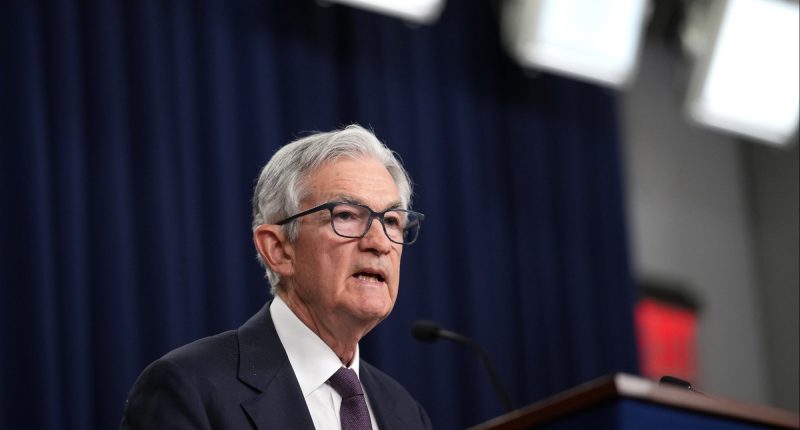Share this @internewscast.com
The Federal Reserve officials have decided to keep the federal funds rate unchanged following the meeting of the Federal Open Market Committee (FOMC) on Wednesday. The rate range continues to be set between 4.25% and 4.5%.
The last time the FOMC cut rates was at its December meeting, when it lowered the target range by 25 basis points, or 0.25%.
The federal funds rate is the interest at which banks lend to each other, influencing borrowing expenses on credit cards and personal loans. Although banks decide independently how to adjust to rate changes, a lower rate typically leads to reduced borrowing costs. Currently, the average interest rate for credit cards is around 21%, and new car loans are approximately 6%.
During a press briefing after the FOMC meeting, Federal Reserve Chair Jerome Powell mentioned that although inflation was at an annual 2.4% in March, it remains above their 2% goal. He emphasized that the Fed is adopting a “wait and see” strategy regarding changes to its monetary policy.
“There’s just so much that we don’t know, I think, and we’re in a good position to wait and see, is the thing,” Powell stated at the news conference. “We don’t have to be in a hurry. The economy is resilient and doing fairly well.”
 Federal Reserve Chair Jerome Powell. Photo by Andrew Harnik/Getty Images
Federal Reserve Chair Jerome Powell. Photo by Andrew Harnik/Getty Images
Industry experts aren’t surprised. Ed Yardeni, head of Yardeni Research consultancy, told NBC News that the best thing for the Fed to do was to wait and see if inflation or unemployment poses more of a problem down the line.
“The evidence so far is that, for now, it’s likely to be more of a cost problem than a labor market problem,” Yardeni told the outlet.
Last month, President Donald Trump levied a 10% tariff on all trading partners and a tariff as high as 145% on China that could affect consumer prices.
Powell noted at the news conference that there was “a great deal of uncertainty” about tariff policies and stated that the Fed would carefully monitor the effects of tariffs on inflation and unemployment.
The next meeting is on June 17 and 18, and experts are already expecting the Fed to keep rates steady. Barclays estimates that the Fed will keep rates the same in June and make its first rate cut in July, while Morgan Stanley anticipates no rate cuts this year, per USA Today.
What does the Fed’s decision mean for mortgage rates?
Melissa Cohn, regional vice president of William Raveis Mortgage, told Entrepreneur in an email that she predicts mortgage rates should lower this week because the Fed decided to hold rates steady.
“Mortgage rates will drop a bit this week as bonds have cheered the Fed’s decision to leave rates alone,” Cohn stated.
Cohn also noted that May would be “a very telling month” as the Fed gets a better idea of the impact of tariffs on the economy.
“Now, it’s back to data-watching and, of course, to see where the tariff negotiations end up,” Cohn stated.









